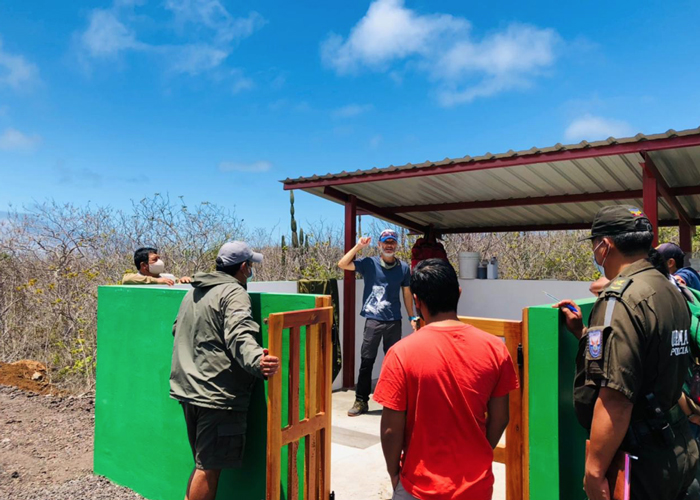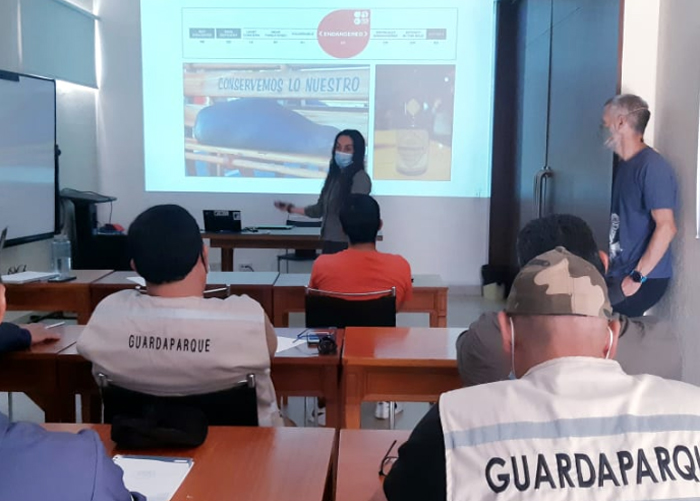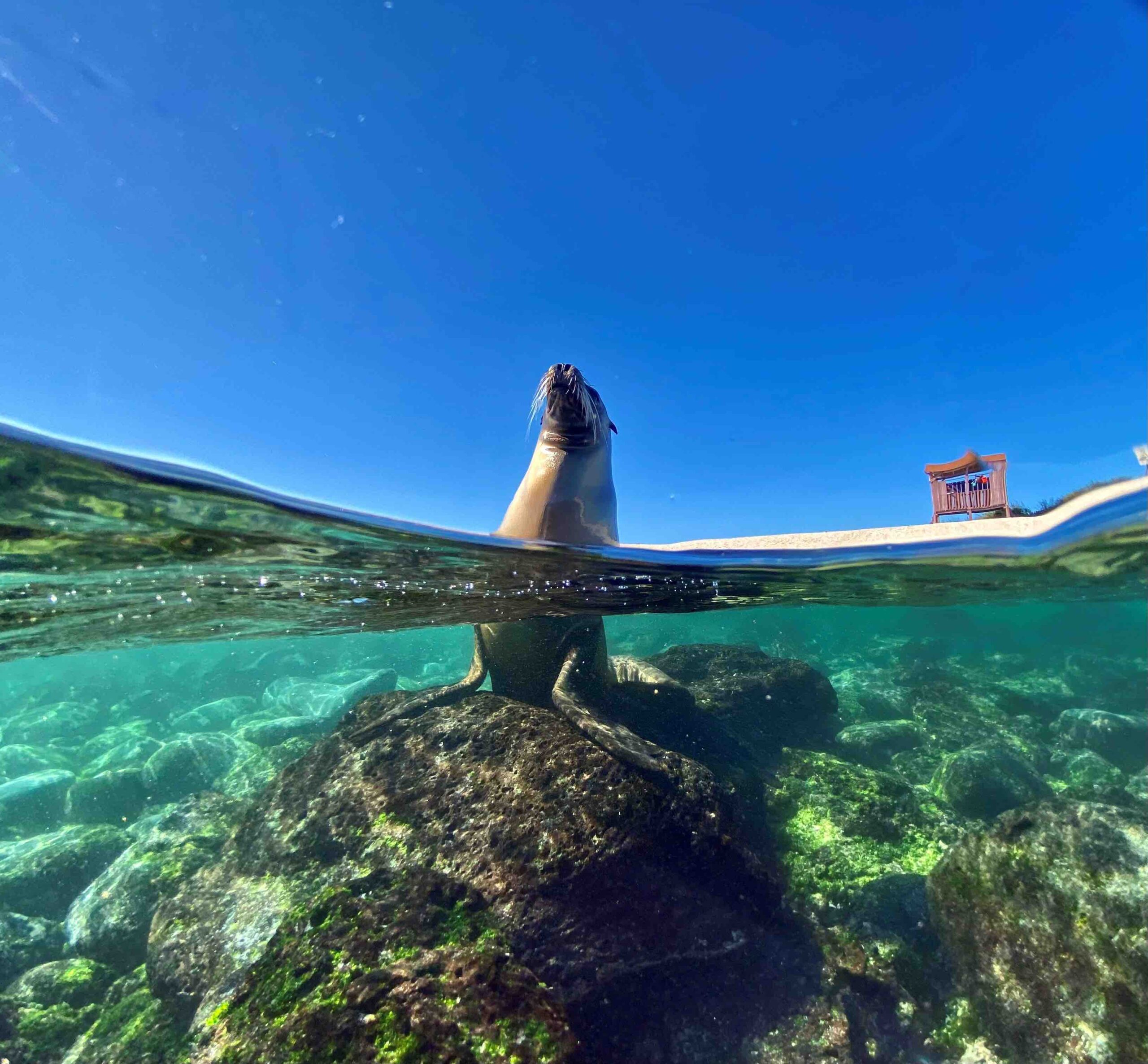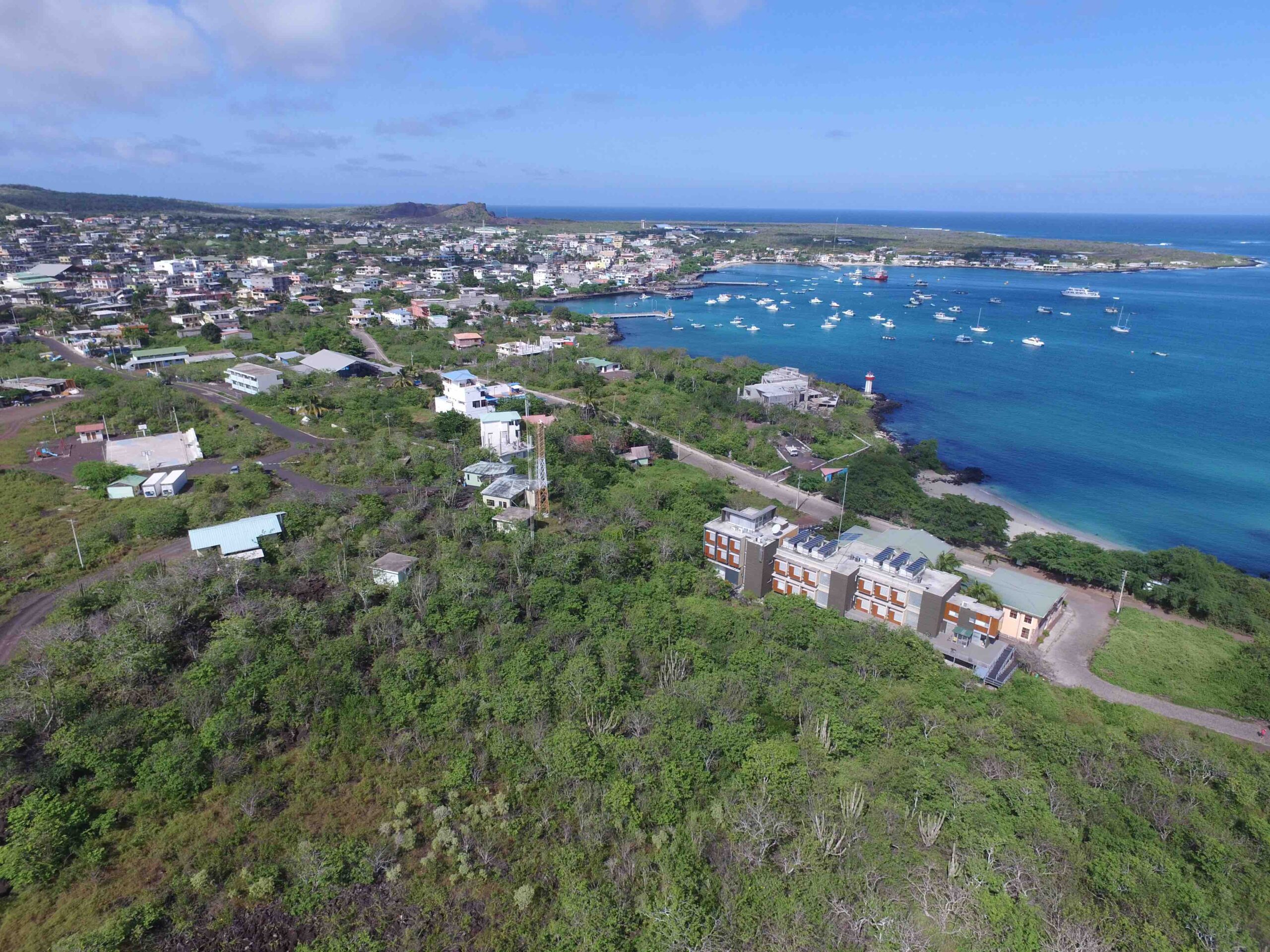The Galapagos Science Center (GSC) and the Galapagos National Park (GNPD) will be collaborating to create an operative and sustainable program of wildlife veterinary and management.
As a first step towards this partnership, the GSC and the TUERI Veterinary Hospital of Universidad San Francisco de Quito (USFQ) recently collaborated on a workshop titled “Primary veterinary care and management of sea lions” in San Cristobal, Galapagos. The objective of this workshop was to create and strengthen the capacities around primary emergency care of sea lions and share best practices of captive and rehabilitation management of sea lions to those in Galapagos whose main duties are to rescue, contain, and manage wildlife.

Many stakeholders were in attendance, including park rangers from the Galapagos National Park, members of the Environmental Protection Unit (UPMA) of the National Police, and GSC staff. The workshop, led by veterinarians Eduardo Díaz and Carolina Sáenz from TUERI, provided background related to the primary veterinary care of sea lions and included a visit to the Galapagos National Park rehabilitation center to better understand technical criteria to manage sea lions in captivity.
“It has been an enriching experience to be able to contribute to the different institutions that work for the conservation and well-being of these incredible animals. Let it be the beginning of many projects. When several people come together for the same ideal, the results are incalculable,” said Carolina Sáenz.
The organization of these workshops will enhance the protection of the Galapagos sea lions, an endemic species classified by the International Union for Conservation of Nature (IUCN) as endangered and arguably one of the most charismatic animals on the islands.
“Thanks to the GSC, Galapagos National Park, and UPMA for their participation in the first workshop on primary care and management of sea lions, hopefully, a new starting point for the conservation of Galapagos wildlife,” concluded Eduardo Díaz.
Together, the GSC and the Galapagos National Park hope to continue developing the wildlife rehabilitation facilities and programming to help not only sea lions, but many other species in Galapagos for years to come.





